1. Major functionality
1.1. Inventory
1.1.1. Items
1.1.1.1. classification
1.1.1.1.1. Finished Goods
1.1.1.1.2. Raw Materials
1.1.1.1.3. Spare Parts
1.1.1.1.4. Services
1.1.1.1.5. Sub-Assemblies
1.1.1.1.6. Container/Truck
1.1.1.2. types
1.1.1.2.1. Finished Goods
1.1.1.2.2. ATO model
1.1.1.2.3. Kit
1.1.1.2.4. Model
1.1.1.2.5. Option Class
1.1.1.2.6. PTO model
1.1.1.2.7. Freight
1.1.1.2.8. Phantom
1.1.1.2.9. Outside Processing
1.1.1.2.10. PLanning
1.1.1.2.11. Purchasing item
1.1.1.2.12. Supply item
1.1.1.3. Categories
1.1.1.3.1. Purchasing Item Categories
1.1.1.4. Material Status
1.1.1.5. Lifecycle
1.1.1.5.1. prototype
1.1.1.5.2. released /rampup
1.1.1.5.3. production /live
1.1.1.5.4. discontinued/ rampdown
1.1.1.5.5. obsolete
1.1.1.6. Attribute Groups
1.1.1.6.1. Main
1.1.1.6.2. Inventory
1.1.1.6.3. BOM
1.1.1.6.4. Costing
1.1.1.6.5. Asset Management
1.1.1.6.6. Purchasing
1.1.1.6.7. Planning
1.1.1.6.8. Manufacturing
1.1.1.6.9. Order Management
1.1.1.6.10. Service
1.1.1.6.11. Invoicing
1.1.1.6.12. Web
1.1.1.7. Units of measure
1.1.1.7.1. Conversions
1.1.1.7.2. Class
1.1.1.8. Cross Reference
1.1.1.8.1. Reference type
1.1.1.8.2. Customer Item
1.1.1.8.3. MFG part number
1.1.2. Transactions
1.1.2.1. Transfer
1.1.2.1.1. Interorg
1.1.2.2. Issue
1.1.2.2.1. shipment
1.1.2.2.2. miscelaneous
1.1.2.3. Move Order
1.1.2.3.1. Subinventory
1.1.2.3.2. Pick Release
1.1.2.4. Sources
1.1.2.4.1. Account/Account Alias
1.1.2.4.2. Sales order/Internal Order
1.1.2.4.3. Internal Requisition
1.1.2.4.4. Purchase Order
1.1.2.4.5. RMA
1.1.2.4.6. Move Order
1.1.2.4.7. Job/Schedule
1.1.2.4.8. Cost Update
1.1.2.4.9. Cycle Count/Phisical Inventory
1.1.3. Replenishment
1.1.3.1. MinMax
1.1.3.2. Reorder Point
1.1.3.3. Kanban
1.1.4. Control levels
1.1.4.1. Revision
1.1.4.2. Serial Number
1.1.4.3. Lot Number
1.1.4.4. Locator Based
1.1.5. Intercompany Flows
1.1.6. Receiving
1.1.6.1. Direct
1.1.6.2. Standard
1.1.6.3. Inspection
1.1.6.4. Expense
1.1.6.4.1. Period Expense Accruals
1.1.6.5. Unordered
1.1.7. Organizations
1.1.7.1. Classification
1.1.7.2. Subinventories
1.1.7.2.1. storage
1.1.7.2.2. receiving
1.1.7.3. Locators
1.1.7.3.1. Rack, Shelf, Bin
1.1.7.3.2. Project, Task
1.1.7.4. Shipping Network
1.1.8. Rules
1.1.8.1. ATP
1.1.8.2. forecast
1.1.8.3. picking
1.1.8.4. pick slip group
1.2. Cost Management
1.2.1. elements
1.2.1.1. Material
1.2.1.2. Material Overhead
1.2.1.3. Resource
1.2.1.4. Overhead
1.2.1.5. Outside Processing
1.2.2. Costing Method
1.2.2.1. Standard
1.2.2.2. Average
1.2.2.3. Period Average
1.2.2.4. FIFO
1.2.2.5. LIFO
1.3. Bills of Materials
2. Technical Niche
2.1. Transaction Open Interface
3. Minor functionality
3.1. Consigned/VMI
3.2. Movement Statistics
3.3. Inter-Org Transfers
3.4. ABC Analysis
3.5. Material Shortages Alerts
4. Adjacent Areas
4.1. Manufacturing
4.1.1. Discrete Mfg (WIP)
4.1.1.1. Outside Processing
4.1.2. Oracle Process Manufacturing (OPM)
4.2. Planning
4.2.1. Advanced Supply Chain Planning (ASCP)
4.2.2. Material Requirements Planning (MRP)
4.3. Oracle Assets
4.4. Enterprise Asset Maintenance (EAM)
4.5. Warehouse Management System (WMS)
4.6. Landed Cost Management (LCM)
4.7. Mobile Supply Chain Applications (MSCA)
4.8. Order Management
4.9. Purchasing
4.10. General Ledger
4.10.1. Ledger Sets
4.10.1.1. SLA

